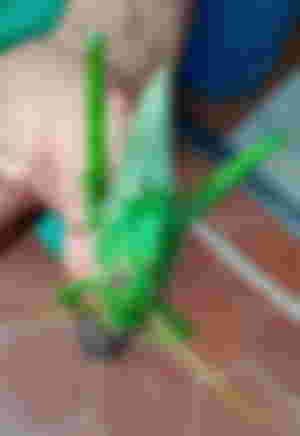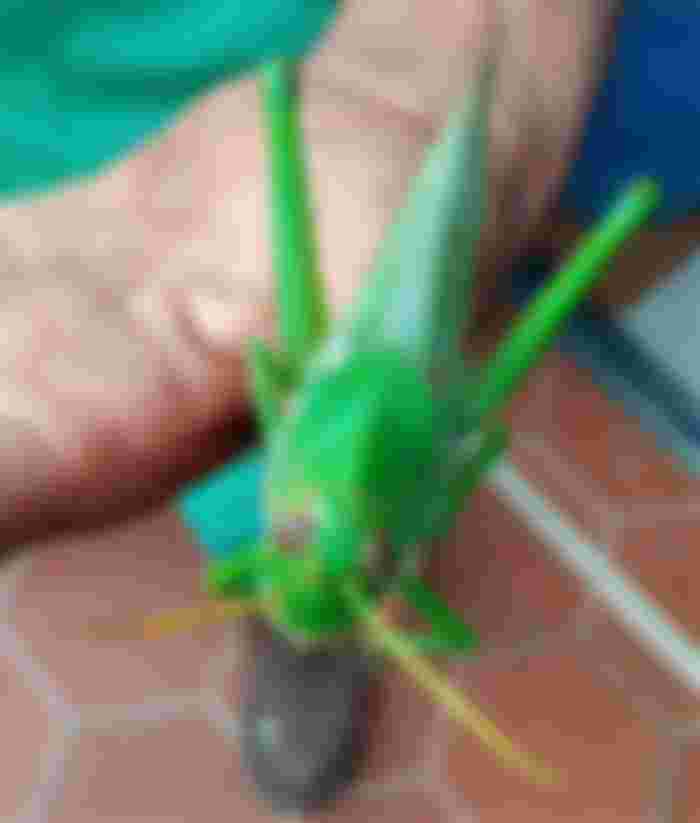Have you ever tried to catch a grasshopper or held one in your hand? It is difficult to catch one because they are quick to jump. These days my husband caught one, so I could take pictures of it; he knows I write on monetized platforms. So, he brought me a beautiful green grasshopper from San Francisco de la Isla de Margarita, Nueva Esparta State, Venezuela.

Grasshoppers are invertebrate animals belonging to the orthoptera of the insect class. There are several species that exist, let's know a little about these cute little animals.
Structure
The body of grasshoppers is divided into head, thorax or trunk and abdomen.
In the head are the eyes and antennae, which are quite long and with which they receive information from their environment. On the trunk are the legs and two pairs of wings. They have 3 pairs of legs and the hind legs allow them to make large and fast jumps. The abdomen houses the sexual organs and is used for respiration.

Habitat
They inhabit preferably warm areas although they adapt to any environment as long as it is warm because they are not able to regulate the temperature, that is why they are more active during the day because they receive sunlight. Generally, they migrate to other environments as long as they find a place where they can feed; this condition makes them concentrate in spaces where there is a lot of grass or bushes.
Feeding
Grasshoppers are herbivores by nature, feeding on grasses, leaves or weeds; however, there are some species that eat small insects.
Reproduction
Grasshoppers begin mating with a courtship phase in which the male demonstrates his best song, emitting sounds called stridulations to attract the attention of the female and warn other males that the territory is occupied, in which case they rub their legs or wings on their abdomen. These insects are oviparous, that is, they reproduce through eggs that are deposited in the soil. The female protects her eggs with a foamy substance.

Longevity
If we count from the egg, they last approximately one year; if the count is made as adults, the life expectancy is only for a few weeks, ranging from 7 to 16 weeks.
Their main predators are said to be mantids and beetles, but also spiders and birds. The eggs are food for flies. The grasshopper is harmless when it is an isolated individual and is an important element in the food chain as it is food for other insects and other animal species.
In addition to the aforementioned characteristics, these insects, when grouped in large masses, become pests that devastate agricultural extensions. On the other hand, in some countries they are consumed for their high nutritional value, as they provide an important protein content for humans whose consumption is beneficial to health, especially in the regeneration of tissues.

Grasshoppers tend to be confused with crickets but they have some differences, one of which is that their antennae are shorter.
Here are some references.
https://entomology.ca.uky.edu/content/%C2%BFes-peligroso-este-insecto-o-no
Translated with www.DeepL.com/Translator (free version)




Yes in this season we can see these grasshopper eveywhere as i live in a village so i many time interact with these